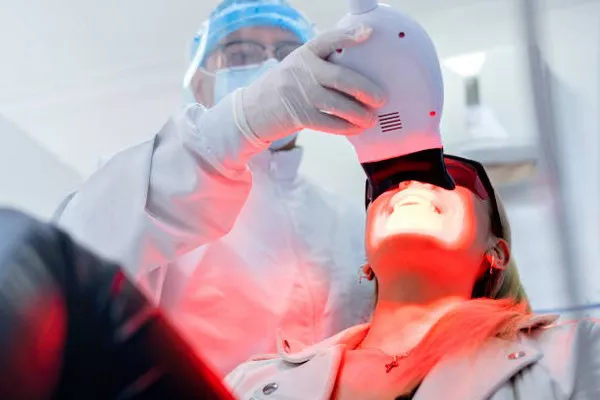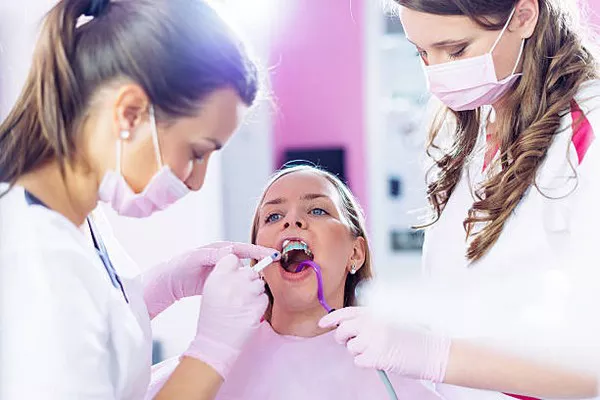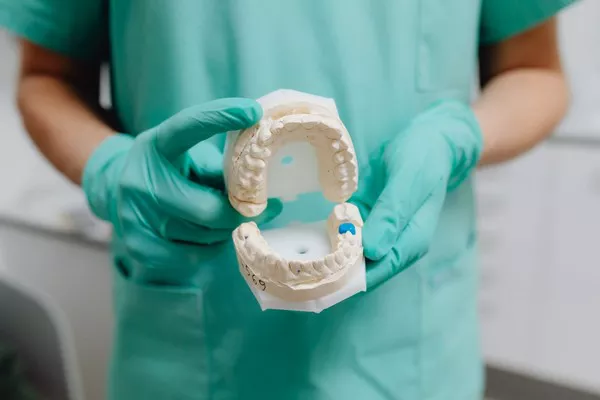In medicine, simple tooth color changes (yellow, dull, stained teeth, etc.) are collectively referred to as tooth coloring.
It can be divided into two types: endogenous coloring and exogenous coloring.
Endogenous coloration is due to the application of certain substances during tooth development, such as taking tetracycline or drinking water of special quality.
It is sometimes accompanied by dental appearance abnormalities, tetracycline teeth and dental fluorosis are common.
Exogenous staining is the external staining of teeth, mainly due to contact with colored food (such as soy sauce, chocolate, etc.), drinks (tea, coffee, cola, etc.) and tobacco stains.
In addition, there are many factors that can affect the color of teeth, such as caries, periodontal tissue disease, tooth aging changes, dentition crowding and misalignment, etc.
Advantages and disadvantages of various whitening methods there are generally two kinds of treatment for tooth coloring, namely restoration treatment and bleaching treatment, or known as grinding teeth treatment and not grinding teeth treatment.
Restorative treatment requires the removal of a certain amount of natural teeth, covered with artificial materials (called restorations), to restore the shape of teeth, cover the abnormal color of teeth, to achieve the purpose of aesthetic.
According to the amount of tooth abrasion, abrasion site and restoration materials, it can be divided into resin veneer, porcelain veneer and porcelain crown restoration.
The advantage of this technique is that it can obtain a more ideal effect of tooth color change.
The disadvantage is the possibility of complications caused by grinding the natural tooth and pulp injury.
In some cases, it still has a certain rate of shedding, and the cost of porcelain restoration is relatively high.
This technique is usually more suitable for patients with shape defects, severe tooth staining, discoloration of dead pulp teeth, and high requirements for aesthetic changes.
Tooth bleaching treatment A treatment that changes the color of teeth without grinding out the natural teeth. It is divided into dead pulp bleaching and living pulp bleaching, both of which are drug bleaching.
Its advantage is that it does not need to grind out the natural teeth, and retains the natural appearance of the teeth.
The disadvantage is that the whitening effect of different tooth conditions will be different.
With the passage of time, there is the possibility of recoloring after bleaching, and regular whitening treatment is needed.
Certain pulp sensitivity symptoms (such as cold and heat sensitivity) may occur after bleaching of living pulp teeth, and there are individual differences.
Cold light whitening is a new bleaching technique which has been applied internationally in recent years.
It is through the special cold light source to illuminate the bleaching agent covering the tooth surface, accelerate the whitening reaction, to achieve the purpose of changing the tooth color.
Its advantage is to the tooth hard tissue and pulp stimulation is relatively small, whitening effect is more direct, significant, the most suitable for exogenous coloring patients.
It also has a certain improvement effect on endogenously colored teeth (such as tetracycline teeth) (especially mild to moderate tetracycline teeth), but the bleaching effect varies from person to person, and sometimes multiple courses of whitening design are needed to achieve the improvement of tooth color.
For severe discolored teeth, it is not appropriate to simply rely on bleaching techniques to change tooth color.
After whitening, attention should be paid to maintaining teeth whitening. In daily life, we should try to reduce the intake of colored food and drink, or clean the mouth in time after contact with pigment, so as to effectively avoid pigment infiltration into the teeth.
After whitening teeth, it is necessary to apply professional whitening products, such as whitening toothpaste.
In addition, regular oral examinations are necessary.
If you have any questions, you can add the QQ group 144^270&484 of WWW_Yake %net% CN to exchange dental diseases. If necessary, you can carry out restoration polishing treatment to timely remove adverse factors affecting oral appearance.
The efficacy of whitening products on the market is limited. We can see that in recent years, teeth whitening cosmetics have gradually become a hot spot in the market.
According to national practice, there is a limit to the concentration of effective components in whitening cosmetics.
Therefore, for the teeth with deep staining, especially endogenous staining of the affected teeth, its whitening effect is limited.
In ADDITION, whitening cosmetics often need longer use, JUST can receive certain effect.
In this process of whitening, patients often because of tooth sensitivity and pain and other reasons is difficult to adhere to the long-term, it is difficult to achieve the standard full use, so it is bound to fail to achieve the whitening effect.
We should carefully choose whitening methods according to the etiological conditions of teeth, such as timely treatment of caries, try to preserve the pulp life state, active treatment of periodontal disease, oral orthodontics, actively improve dental health, promote dental aesthetics.
Tooth whitening is a very specialized field, and there are both gains and losses.
In some cases, various whitening techniques will have certain application limitations (especially endogenous staining), it is difficult to achieve perfect.
In addition, it is important to fully understand the knowledge and professional and systematic whitening design before tooth whitening treatment.































